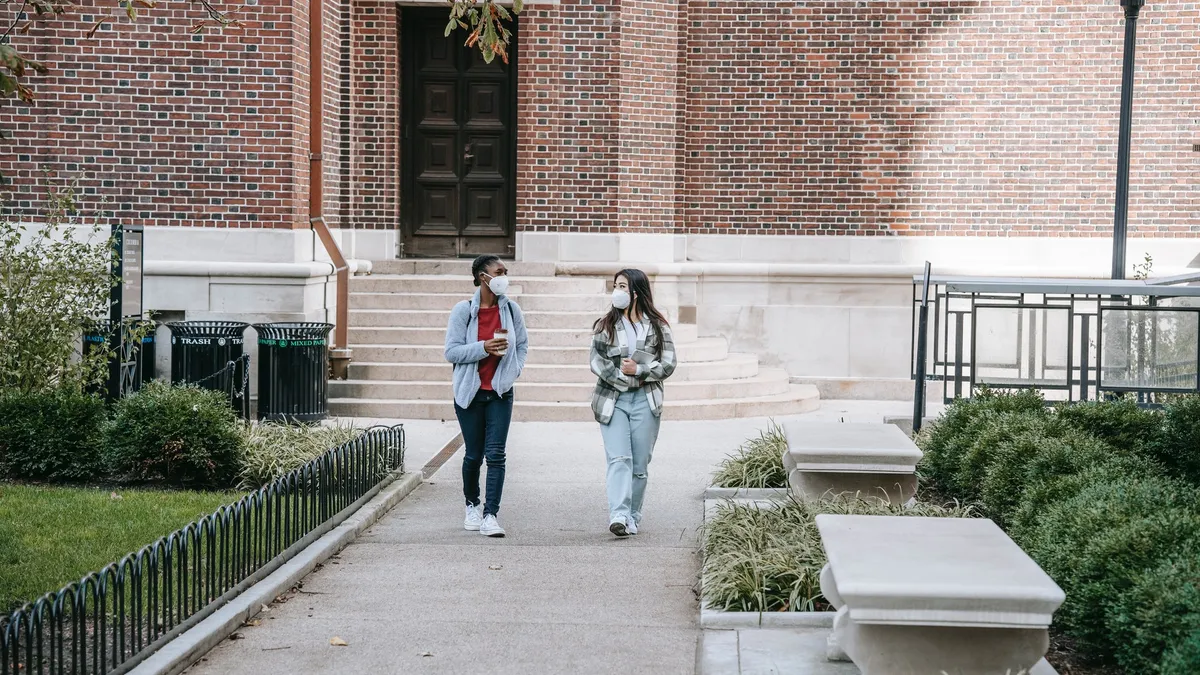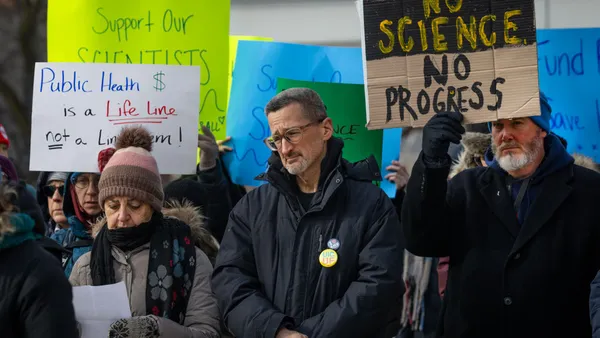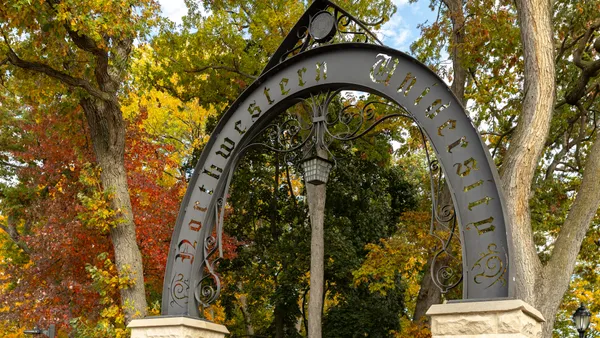Dive Brief:
- State tax appropriations for higher education fell 1.8% in fiscal 2021, but the losses were uneven among states and concentrated in the two-year sector, according to an analysis from the State Higher Education Executive Officers Association.
- States are giving four-year colleges $63 million less in fiscal 2021 than they did last year, a 0.1% decline. Meanwhile, they're cutting funding to two-year institutions by $457 million, a 2% decline.
- Enrollment losses and pandemic-related expenses are buffeting community colleges' budgets as these schools face cuts in state support.
Dive Insight:
Roughly $1.9 billion in federal relief funding is helping states keep higher education appropriations flat in fiscal 2021, SHEEO's analysis found.
Without federal help, however, state support for higher education would have declined by $1.7 billion. Around 70% of states reported lower year-over-year tax appropriations for the sector when adjusted for inflation.
The federal relief is averting declines in higher ed funding for six states, including Texas. For states trimming support to the sector, that aid is reducing the average decline from 6% to 4.4%.
This year mirrors funding trends during past economic downturns, SHEEO analysts note. The declines in higher ed support are larger than those seen during the early 2000s recession but smaller than the first year of cuts during the Great Recession.
However, overall state funding to higher ed never recovered from declines during that latter period. "The vast majority of states have just never been in this kind of situation going into a recession," said Sophia Laderman, a senior policy analyst at SHEEO.
Declines are uneven so far. Six states slashed funding to the two-year sector by more than 10%, compared to only three states that did so in the four-year sector.
Nevada claimed the largest funding declines to both the two-year (19.9%) and four-year (18.9%) sectors. Arizona followed closely behind, cutting support for community colleges by 17.2%. Missouri had the second-largest drop in funding to four-year colleges, at 11.2%.
Lawmakers should watch whether colleges have enough money to provide an accessible and high-quality education, the report's authors advise. That will include keeping an eye on declining enrollment, especially at community colleges.
Although enrollment typically increases at these schools during economic downturns, it fell 10.1% year over year in the fall, according to data from the National Student Clearinghouse Research Center. Undergraduate enrollment at four-year public and private nonprofit colleges was flat.
"There are pressures in more directions than usual," Laderman said. Community colleges "have decreases in both of their primary revenue sources at the same time. That puts them in a really tough position."
Correction: This article has been updated to reflect updated information from SHEEO about how much money states gave to four-year colleges in fiscal 2021 compared to the previous year.













